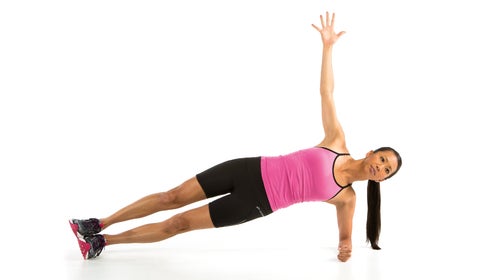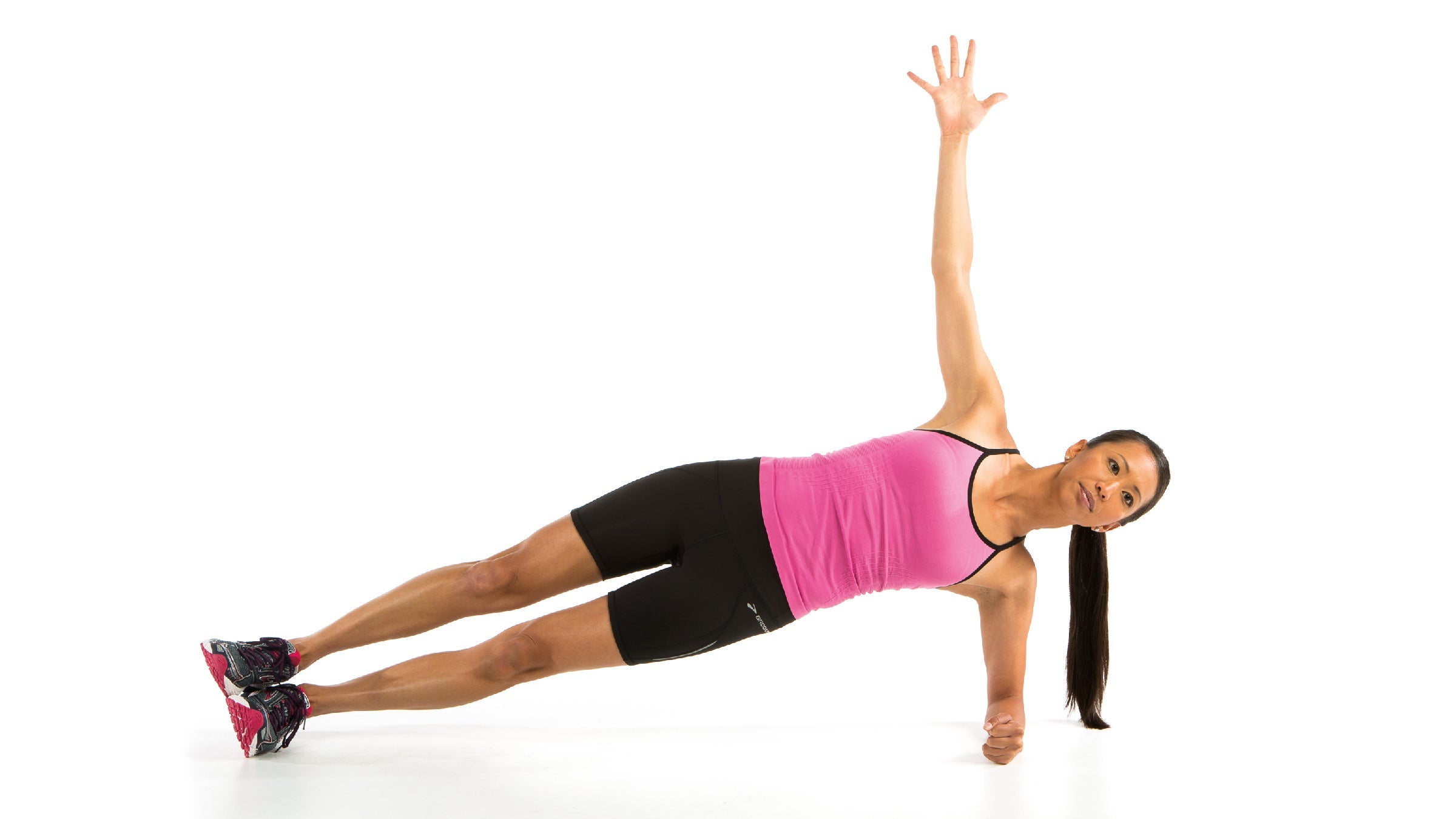When you perform any strength-training movement, your muscles may be engaged not only actively, when a joint is flexed or extended, but also passively, as when a pose is being held. The push-up, for example, engages the muscles of the core without extending or contracting them; they work just by holding the body rigid as the upper body completes the exercise. Forcing the body to balance, then, forces a variety of muscle groups to get engaged and work to accomplish the underlying movement.
As you will soon see, there are many ways to do this: We can remove a support by standing on one leg while doing an exercise. This creates lateral instability and forces the muscles of the hips, legs, and core to engage to keep us from toppling over. We can sit or lie back on a stability ball while exercising, which forces the core to engage in order to keep us from tipping over. Instead of doing exercises with dumbbells bilaterally (a dumbbell in each hand), we can do them unilaterally (a dumbbell in one hand only). This puts lateral pressure on the body as our center of gravity shifts toward the hand with the dumbbell. Think of that scene from The Flintstones when a rack of dino-ribs is delivered to their car at a drive-in. Remember what happened? The weight of the ribs flipped the car over. To avoid that same result, the body must engage the core to remain in place.
The net result of all these efforts is to engage more muscles during each exercise and to ask the body to figure out how to control itself in space while moving in complex ways. By challenging the body to figure out the best ways to do this, and to gain strength in order to do it, we will be preparing the body to more effectively and efficiently engage these same muscle groups in the sports we most care about.
Here, we take some well-known, traditional strength moves and challenge you with additional muscular engagement.
Single-Arm Dumbbell Chest Press

Hold one dumbbell overhead, with your elbow slightly bent. Lower the weight, flaring your elbow outward. Bring the weight down until you feel a stretch across your chest. This version of the chest press destabilizes your body and forces your core to work harder.
Hip Raises
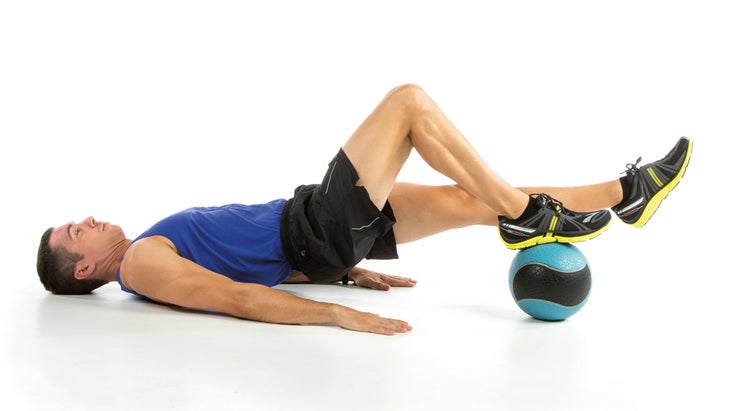
Lie faceup on the floor with one leg bent and one extended straight out, hovering about 2 inches off the floor. Position a medicine ball under the bent leg’s foot. Raise your hips until you have created a straight line from your knees to your upper body. This variation will engage the hamstrings of your planted leg as they prevent the ball from rolling away.
Push-Up
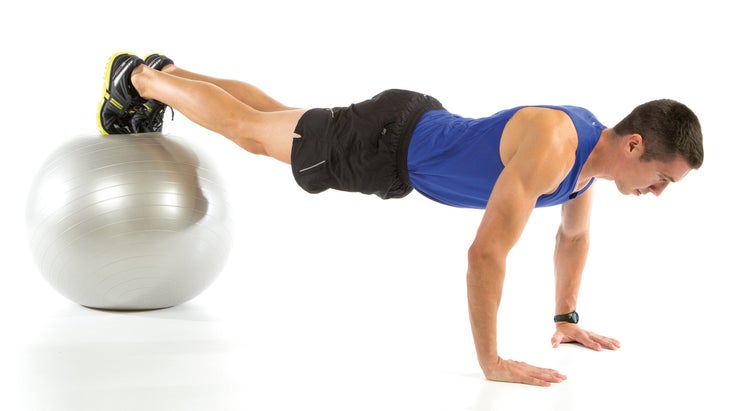
Challenge yourself in this go-to move by placing your feet on a stability ball. Making the platform for your feet movable introduces instability, which engages your core even more.
Side Hip Raises
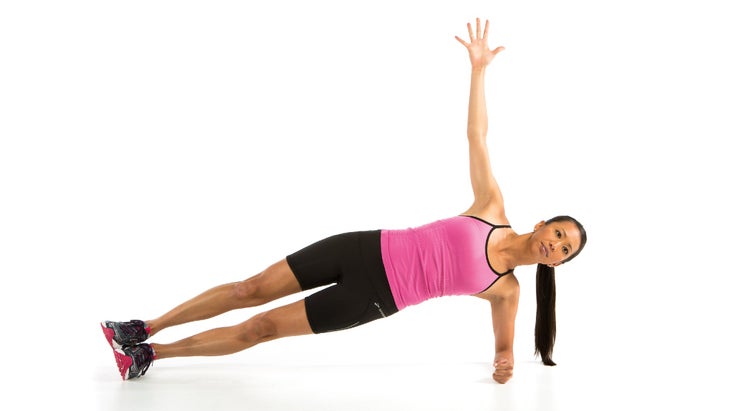
Lie on your side on an exercise mat. Raise your hips in the air to a side plank position, holding your body in a rigid line while resting on your elbow. Hold your free arm straight up. Lower your hips down to an inch or two off the mat, then raise them back up again. By putting a percentage of your body weight farther from your center, you decrease your leverage over your body and raise the challenge for your core in its effort to hold your body stable in space.
Make sure that your elbow is directly below your shoulder. If the shoulder is even slightly out of line, it will endure excessive stress and the move will be much harder to perform.
Arm Circles/Reverse Arm Circles
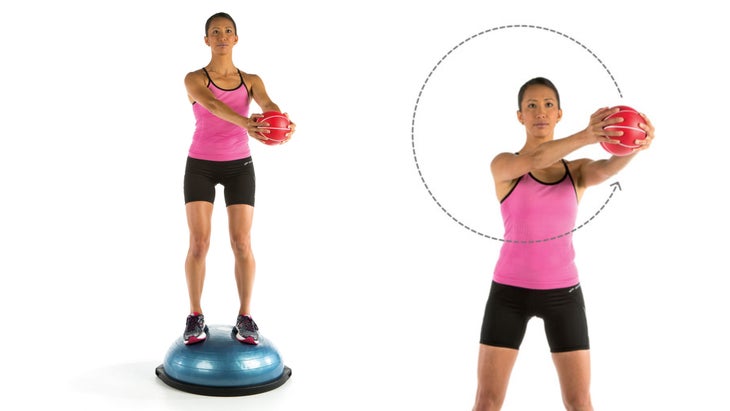
Hold a dumbbell or medicine ball with both hands, and stand on either side of a BOSU with your feet shoulder-width apart. Extend your elbows to straighten your arms, then draw a large clockwise circle with the weight. Experiment with how close you can move your feet together; the narrower they are, the harder the move.
Weighted Swings
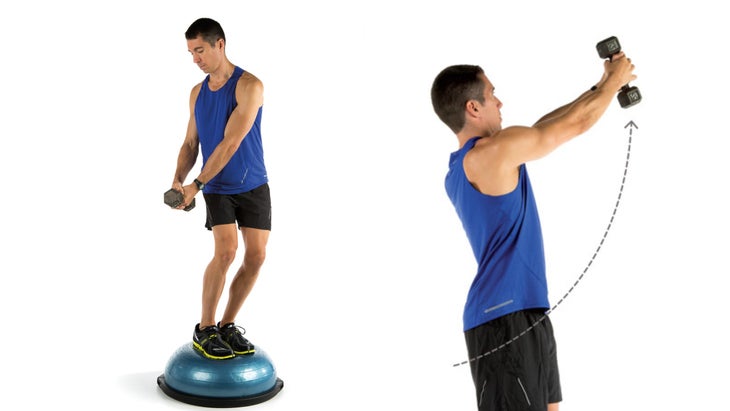
Stand on either side of a BOSU with your feet 2″–3″ apart and your knees slightly bent, holding a dumbbell or medicine ball with both hands near your outer hip.
Swing the weight up diagonally toward the opposite side. Keep your arms as straight as possible through the swing, especially during the middle phase of the movement, when your arms are in front of you. Keep your eyes on the weight as you swing, and aim to swing your body as a single unit.
Adapted from Quick Strength for Runners by Jeff Horowitz, with permission of VeloPress.
